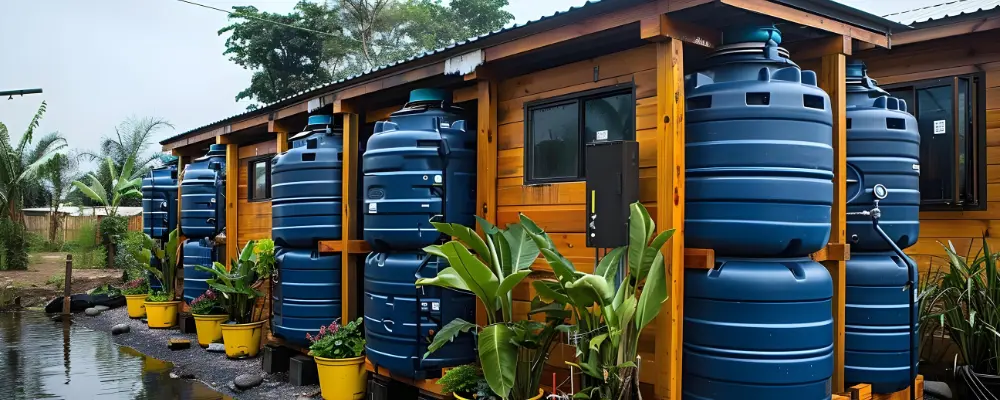Water tanks are widely used for storing water at home, and in various other places including factories and industries. These are usually placed over thro of or on top of the buildings and distribute or circulate water throughout the building. These are 2 major varieties of tanks that are being widely used which is concrete tank or plastic tanks.
There always exists a dilemma of which one to choose for your purpose. There are various other types of tanks such as Corrugated steel tank, welded steel tanks, fiberglass tank, ploy tank, onion tank, frame tank and pillow/bladder tank that are used in commercial purposes. Here we will discuss the capacity and cost for home overhead water tank.
Plastic tanks
Plastic tanks are very popularly used as they can be transported everywhere and are light in weight. It is also easy to maintain, rust-proof and economical and is available in circular and cubical shapes. They are also easily available in varying sizes based on your requirements. It is usually made from high-density polyethylene and is also leak proof and portable. It is water and airtight and hence the water inside remains hygienic and good to use.
The capacity is also variable and if you aim to expand it you can do so by adding more tanks to the queue. Although the installation process is also easy the issue occurs that with prolonged exposure to sunlight, the tank starts losing color and starts becoming brittle like syntex plastic tanks which are common. Cost wise plastic tanks are cheap and easy to buy as compared to concrete tanks. Also keeping this durable during natural disasters is not possible as compared to concrete tanks.
Concrete tanks
These are also popularly used in households. This is usually constructed in varying shapes and is strong and long-lasting. It is made from RCC and helps save water at home. Concrete tanks are easier to clean and is durable compared to plastic tanks. Also, with regular maintenance this can last many number of years in comparison to plastic tank. This also keeps water cold.
It is heavy in weight and is not rustproof and sometimes the calcium from tanks might leak into water. Also, the construction needs to be paid lot of attention to as bad construction will lead to leakages and cracking. While sunlight does not affect the quality of construction in any way as it does not expand or contract the structure if the water in exposed to light for a long time it might lead to the growth of algae which will reduce quality and hygiene and the water stored.
A skilled person is necessary for constructing a proper waterproof tank to keep the storage proper. The construction also costs much higher than that of plastic and needs specialized people to work on the construction. The capacity of the tank can be changed as per necessity based on the building’s needs. Residual removal is easier in the case of PVC water tanks or plastic tanks if checked and removed once in a week while this is slightly difficult in the case of concrete tanks.

